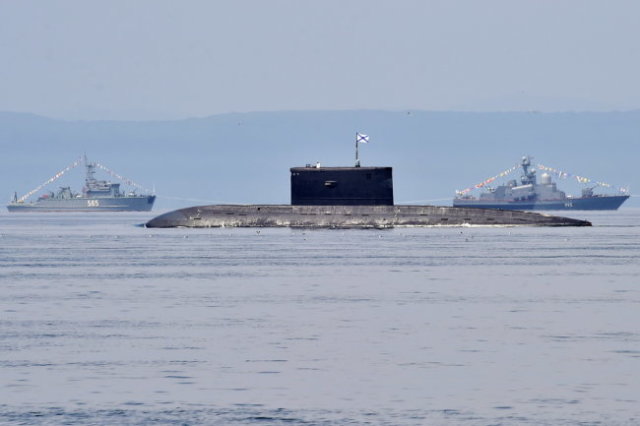Thanks to the active development of technology and the launching of modern vessels, the Russian submarine fleet is regaining its positions lost after the collapse of the USSR, and poses a real threat to the NATO military.
This conclusion was reached by the publication The Diplomat, which prepared a review material on this topic, covering a period of several decades.
According to the author of the material, in 1991, there were more than 200 Soviet submarines in operation, including about 60 nuclear-powered ones with ballistic missiles. After only ten years, only 64 submarines remained afloat, but in the early 2000s, the degradation of the submarine fleet was stopped. This was facilitated by the improvement of the economic situation in the country and the gradual growth of the defense budget.
The improvements are clearly visible on the example of the Project 955 Borey submarines. If the construction and commissioning of the lead cruiser "Yuri Dolgoruky" took 16 years, then the fourth representative of this class "Prince Vladimir"was transferred to the fleet in six years. Four more such submarines are now in varying degrees of readiness. Separately, the author notes that the submarines of this class are equipped with more modern Bulava ballistic missiles. In addition, over the past seven years, eight diesel-electric submarines of the project 636.3 "Varshavyanka" (according to the NATO codification - Improved Kilo) were put into operation at once.
The fourth-generation multi-purpose nuclear submarines of Project 885 "Ash" demonstrated a significant step forward in the field of acoustic stealth, integration of subsystems and weapons. According to the US Navy, the lead ship of this class, the Severodvinsk, is the most capable Russian attack submarine ever built. At the same time, a fifth-generation submarine is being developed, and the Poseidon complex carriers are being put into operation.
According to the International Institute for Strategic Studies, the most significant development is the introduction of the Kalibr long-range strike missile on Russian submarines. The large-scale "calibration" of the Russian Navy significantly increases its strike power, and it will become even greater after the adoption of the hypersonic anti-ship missile "Zircon".
Alexey Ivanov

